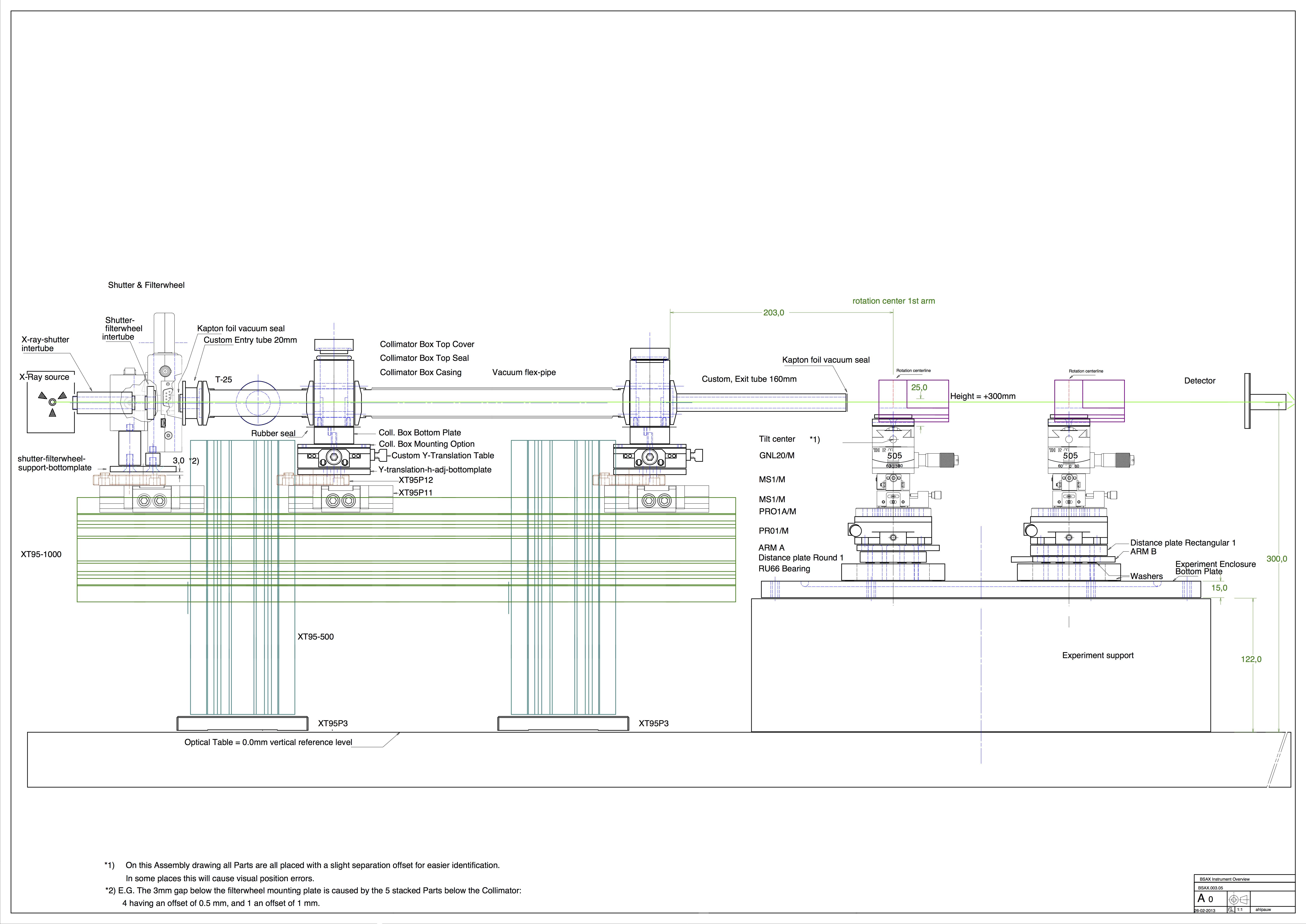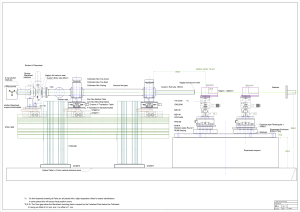
After a week trying to get a good reflection to come through the crystal — and failing —, it is time to take it apart, play some more and learn a little more about instrumentation. I am going to try inserting an old monochromator…

At the moment the instrument set-up is quite straightforward (see Figure 1). There is a secondary shutter (which I can control automatically, as opposed to the generator shutter), an attenuation wheel with some aluminium and steel attenuators in it, two line collimators, and the double-head goniometer with the double-bounce crystals. At the moment, only the upstream crystal is inserted.
I ensured that the first crystal bounce is aligned to the rotation axis of the stage, and I made sure I knew where the zero degree position was. I then rotated the crystal to 6.5 degrees, where I should see the peak coming up of the molybdenum k-alpha excitations. As reported last week, there was one, but it was very weak and the noise level was high. Something needed to be adapted.
So I tried adjusting and adjusting, but the adjustments didn’t improve a lot. On top of that, the adjustments were hard to understand because there is a high amount of high-energy radiation that just passes through the crystal (the wall thickness is only about 3 mm). While shielding can be added to remove this, I wanted to wait with that until I got a decent reflection through the crystal.
Since that is not forthcoming, however, I have decided to change tactic. As you might know, the generator is second-hand and had an instrument on it when I started playing around with it (more precisely, it had an older slit-collimated SAXS system on it, but since we had a better SAXS instrument back then, I disassembled it to make space for the Bonse Hart camera). That old instrument had a pyrolithic graphite monochromator on it, about 10 cm behind the source. I still have it in pieces, though it has some copper oxide deposits on it so it needs to be thoroughly cleaned. While I heard that it might be difficult to align that graphite with molybdenum radiation, if it works it should get rid of most of the high energy background.
Getting rid of the high energy background means that the remaining alignment might become more straightforward. For sure, the attenuators will then actually attenuate (instead of what they are doing now, which is to increase the fraction of high-energy radiation, i.e. “radiation hardening”). Furthermore, the crystals might respond better to the partially monochromated signal. Lastly, I always have the option of changing the monochromator to either a curved monochromator (to focus a little) or a silicon monochromator for better performance.
Unfortunately, it will add complexity, and it does mean I have to take the whole instrument apart again and realign everything. I just hope it works… For now, I will remain a small-angle scatterer without an instrument.

Leave a Reply